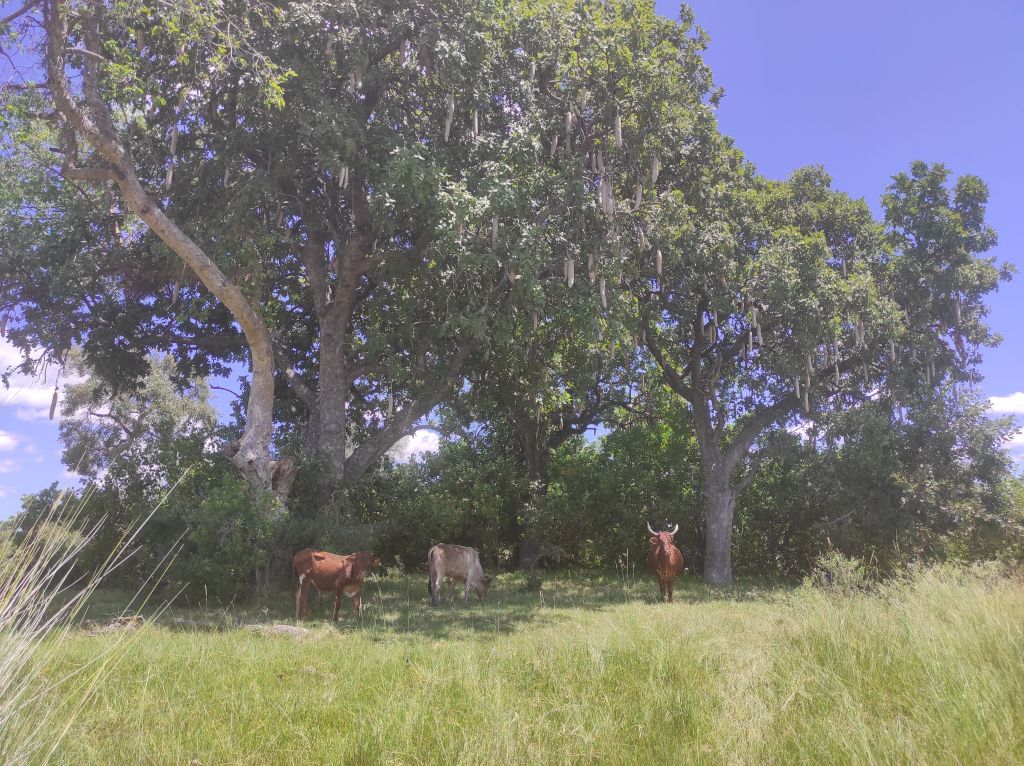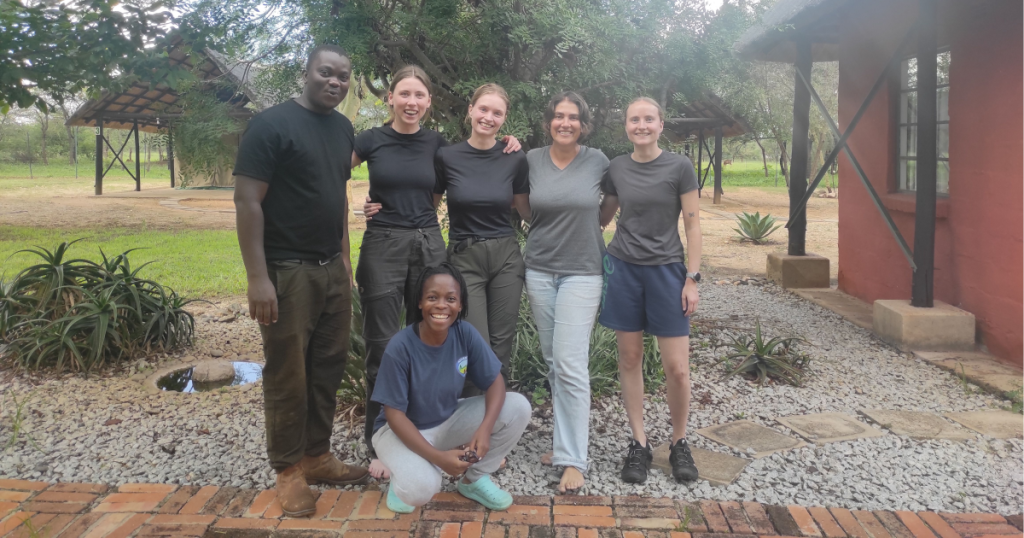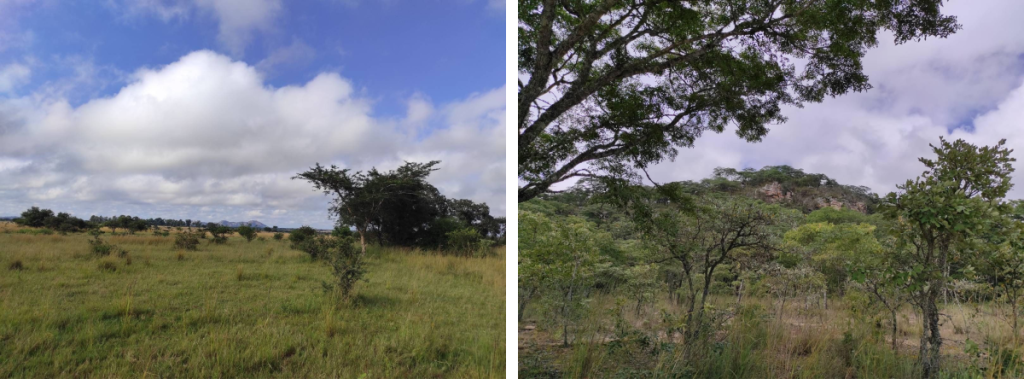Sounding more like a philosopher of the post-modern condition than an ecologist, Dr Elizabeth le Roux dwells on the importance of in-between spaces, of flow and dynamic relationships. It’s time, she says, to bin the physical and conceptual binaries of spaces for people and spaces for conservation. Or cattle versus wildlife.
We’re talking on Zoom about her research on “cattle corridors”, for which she was awarded the prestigious Jennifer Ward Oppenheimer research grant (JWO Research Grant) in 2022.
Le Roux’s research focuses on one of the most urgent but overlooked issues in conservation: connectivity between isolated protected areas. As wild habitats become increasingly fragmented, animals and even plants struggle to move, migrate, and disperse across landscapes.
Initially I’m under the impression that the problem we’re talking about is fences around game parks. However, Le Roux points out that “across the whole of Africa, a lot of the protected areas don’t have fences to begin with. They are already completely open to the rangelands beyond. Where we do have fences, yes, that becomes a question for some of the bigger animals. But for this project, we’re looking at smaller species like jackals, bush babies, mongoose and even birds that are not limited by the fences themselves, but limited by the hospitability of the habitats they need to cross.
“So it’s about more than fences.”
But if the impediment to movement is not fences, then what is? Le Roux answers that withered grasslands and degraded ecosystems can be unbridgeable and so set up a fence of desolation which confines animals and plants to a limited range, which itself shrinks under the threat of climate change or poor management.
Le Roux and her team of PhD and Master’s students are therefore investigating, in Zimbabwe and Botswana, how cattle-grazed rangelands, if managed carefully, can serve as ecological corridors linking reserves across the southern African region. The emphasis is on “cattle-grazed”. This has implications not only for wildlife survival but also for the resilience of rural livelihoods which depend on pastoralism, and which is often pitted against traditional conservation practices.

One line of research explores how grazing strategies influence wildlife connectivity through changes in grassland structure and microclimates. By combining tools like temperature loggers, camera traps, and LIDAR scanning, the study assesses how varying cattle impacts and grazing intensities affect habitat quality for animals ranging from lizards to birds. The aim is to understand how landscape features such as shelter, temperature, and vegetation complexity shape animal movement and to model connectivity between protected areas based on these findings.
Parallel research focuses on plant connectivity and genetic health in rangeland ecosystems. This includes studying how different grazing methods influence landscape suitability for seed germination, nutrient variability and its link to plant species diversity, and the genetic flow between wildlife populations. Together, these projects highlight the ecological risks of habitat fragmentation, not just for large, mobile species, but also for smaller organisms whose movement and survival depend on habitat quality and genetic exchange across landscapes.
Le Roux argues that in nature, some of the most important processes unfold in transitional, in-between spaces, like rangelands, where uncertainty isn’t something to be feared, but embraced. These are areas that are not boxed-in or exclusively defined, neither pristine wilderness nor intensive agriculture, but something more dynamic: places where livelihoods and ecological function can coexist. In a world being shaped by growing human pressures, Le Roux argues that we need to reimagine what nature looks like, not just as something to preserve in isolation, but something to live within, “respectfully”.
Acknowledging this tension and the need to move beyond binaries of control and wilderness, there is an irony in Le Roux’s attitude, because it contradicts what motivated her to become an ecologist in the first place.
“Honestly,” she says with more than a touch of embarrassment, “I started for selfish reasons. I wanted to find a job where I could be in this wild nature that nobody else is in, where I could just have my space and enjoy it while it’s there.
“But since I started actually working in the field I’ve become a lot more positive about the future of nature than I was when I was a student. Because then I was thinking, we were absolutely never going to recreate nature like it used to be. But I don’t see it that way anymore. And I think there are relatively easy paths to go down to create space that is acceptable. I don’t mean in a despondent way, but ‘acceptable’ as in, this can be an ecologically functional landscape.”
Relinquishing her fixation on “unspoiled nature” and a desire, or rather obsession, to control it has allowed her to see and use the value of an African perspective in her work.

Le Roux is based the University of Aarhus in Denmark, where she is an Associate Professor, which has given her a realisation of “how much African scientists and African people have to teach Europe. I now work in rewilding in Denmark, where they’re trying to get some semblance of nature back, some semblance of autonomous nature back into a system that is outlined in linear borders of precise management in-between corn and rapeseed fields and whatnot.”
African ecologists and people who live in rangelands “have an understanding of systems that have long been lost from the knowledge of Europe,” she says.
Denmark, she emphasises, is a country where “the space that’s been left for nature is so small that many people feel they have to control every inch of it. Often times all that is available is a tiny block, that we can only put in a small herd of feral cows and a tiny band of horses, and then we monitor exactly what happens. That kind of control becomes necessary when you’ve only got fragments left.
“But I think people have forgotten what wild nature actually is, and that it’s not as intimidating as they imagine to have functional wild systems. You don’t need to control every detail.
“Take rangelands, for example, those spaces connecting protected areas. People often think, ‘We must manage this park and that park, and everything in between is just a mess that we can’t control.” But we don’t need total control over the in-between. What we need are basic principles of ecological functionality, and to not mess it up by pushing too hard for an unrealistic notion of untouched wilderness.
“If we overload the demands on rangelands, people are forced to convert them into agriculture, which is far worse ecologically than using them for grazing. Production grazing, when done right, can actually support ecological processes. We don’t need to fixate on having X number of this species or that one.
“Ecologists, African or otherwise, understand the processes that sustain ecosystems: such as connectivity, dispersal, disturbance. Especially patchy disturbance. There’s this core idea in ecology, the ‘intermediate disturbance hypothesis’: too little disturbance, and dominant species take over and reduce biodiversity; too much, and only pioneers survive. But if you hit that balance, some areas disturbed, others resting, shifting across time and space, that’s where diversity thrives.
“We understand these processes. But implementation varies hugely; what works in Denmark doesn’t map neatly onto Africa. And our thinking has become so polarised: it’s either completely wild or it’s not nature at all.
“We need to reimagine what a functional landscape looks like, not just a protected one. Rangelands can offer functionality and support livelihoods, unlike monocultures of corn. Conservation used to mean trying to capture a frozen image of what nature looked like before humans, putting it behind fences, pulling out invasives, sealing it off.
“But we now know ecosystems are dynamic.”

But Le Roux muses that even the language we use evokes the opposite of dynamism. “We call it ‘conservation’, as if we’re preserving something static. I think we need to look forward instead: to novel but functional futures. Futures that may not look like the past, but still work. And I hope this project contributes to that reimagining.”
Is there a word preferable to “conservation”?
“Wow, that’s a hard one. Perhaps ‘stewardship’ is a better alternative. I’d want something that means management, but without implying total control. I keep coming back to the idea of the autonomy of nature. We need to recognise that many functional processes can happen without us, as long as we stop interrupting them. For example, dispersal can happen if we maintain connectivity. We can be part of the landscape, just like other species, but we must be aware of whether our presence disrupts or facilitates those key ecological functions.
“Right now, it feels like we’re trying to protect this idealised vision of wild nature while facing overwhelming pressures: climate change, land use, globalisation. And frankly, to use a crude metaphor, it can feel like farting against thunder. You’re not going to win by doing the same old thing.
“We really have to reimagine these landscapes. And I hope this project is a small step in that direction,” says Le Roux.
The JWO Research Grant is an annual award of $150 000 to support early-career scientists seeking solutions to some of Africa’s most pressing environmental problems. This year’s winner will be announced at the Oppenheimer Research Conference in Midrand in October.
Yves Vanderhaeghen writes for Jive Media Africa, science communications partner of Oppenheimer Generations Research and Conservation.
Author
- Research tackles the tensions between nature and necessity - October 1, 2025
- Unlocking Africa’s wildlife economies - September 19, 2025
- The Hidden Carbon Power of South Africa’s Burned Grassland - September 5, 2025


